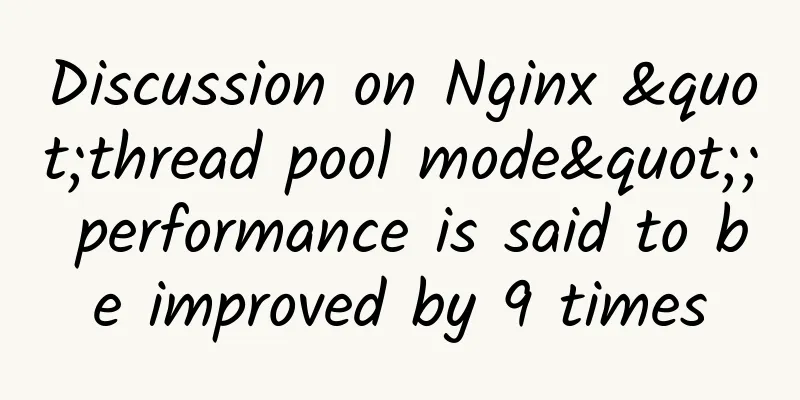Highlights | Speech content of the 39th GTI seminar (1/2)

|
On February 24-25, the 39th GTI seminar was held in Barcelona, Spain. Senior executives and experts from international organizations such as GSMA, 5G-ACIA, NGMN, ITRI, China Mobile, Vodafone, France Telecom, Telefonica, Softbank, NTT DOCOMO, Korea Telecom, SKT, Turkey Mobile, Turk Telecom, YTL and other international operators and industries attended the meeting to discuss the key technologies and innovative applications for the development of the mobile information industry. This article: 5G Technology and Product5G Technology and Product Working Group ReportThe 5G Technology and Product Working Group summarized the highlights of the working group's work in 2023 and looked forward to the key work in 2024. In 2023, in terms of organizational management, the working group continued to expand its circle of friends and widely invited global operators and industry partners to participate in GTI organizational management and technical discussions. A total of 9 companies newly joined PFLC, and 10 industry partners from different countries and industries shared their views on 5G development opportunities, 5G network deployment experience, 5G product innovation, and 5G business evolution for the first time at GTI; in terms of technical discussions, the working group held 3 seminars and planned 37 speeches to share network deployment experience, discuss technical innovation directions, and discuss hot business applications, providing new ideas for promoting global 5G development and enhancing 5G value; in terms of results release, the working group released a total of 5 white papers on XR, RedCap, 5G home base stations and network intelligence, to build industry consensus and enhance GTI's international influence; in terms of technology display, the working group organized more than 10 technology product displays and 1 field visit, including low-cost series base station products, 5G new calls, naked-eye 3D and other new services and 5G-A new technology displays, and continued to serve as a platform for industry exchanges and voices. In 2024, the working group will continue to advance its work around the five project groups of spectrum promotion, technology evolution, cross-domain integration, product innovation and test evaluation. First , it will continue to share 5G commercial experience and promote larger-scale deployment of 5G worldwide; second, it will strengthen technology and product innovation based on demand, explore the development of new 5G technologies, build a 5G end-to-end low-cost product system, and explore more new businesses and new applications; third, it will strengthen cross-domain integration and innovation of 5G and AI, computing power, perception and other technologies, enhance cross-domain and cross-organizational collaboration, expand the boundaries of 5G capabilities, and maximize the value potential of 5G. New Spectrum1) 6GHz spectrum will become an important cornerstone for the further development of IMT Nokia Bell released the "GTI 6GHz Technology White Paper" on behalf of the GTI Spectrum Promotion Project Team and gave a keynote speech titled "6GHz spectrum will become an important cornerstone for the further development of IMT". Nokia Bell believes that in order to cope with the growing demand for mobile data, additional spectrum resources will become an important cornerstone to support economic growth and environmental sustainability. The importance of the 6425-7125MHz frequency to the IMT system will continue to increase, and it will become a key spectrum resource for the development of 5G Advanced and 6G networks. It will not only meet the high requirements of future mobile communication systems for speed, capacity and latency, but will also provide strong support for the development of 5G Advanced and 6G networks. Nokia Bell recommends considering and implementing spectrum planning and policy formulation, technology research and development and innovation, industry chain collaboration, market promotion and application expansion, and international cooperation and exchanges . New Capabilities: Endogenous IntelligenceAI-optimized network operations: 1) IntelligentRAN, evolving towards L4 network self-intelligence and enabling 5G-A intelligent endogenous Huawei introduced the development trend of the intelligent industry, the key features of wireless network AN L4, and Huawei's IntelligentRAN solution's thinking on the road to L4, such as digital twin technology, deterministic experience assurance, fault prediction and minute-level perception optimization, and multi-objective optimization and energy saving. These directions can help operators' wireless networks accelerate towards L4. 2) Exploration and practice of large communication model applications ZTE introduced that generative AI and communication big models are completely changing the communication field and leading the development of the next generation of intelligent operation and maintenance. ZTE is committed to applying these technologies to actual production domains, and has spawned multiple intelligent agent applications based on the self-developed Nebula communication big model. By building a large amount of high-quality communication field and scenario corpus, it enables intelligent agents to load subdivided domain knowledge bases and accurately complete their respective professional domain tasks. Intelligent agents of different roles simulate human organizational structures, form intelligent agent teams, and improve the efficiency and effectiveness of task completion through collaboration and confrontation, helping operators to produce practical results in multiple production domains such as guarantee, maintenance, and optimization, simplifying production processes, and truly achieving reduction in staff and increase in efficiency. ZTE hopes to cooperate with industry partners in all aspects to help digital transformation, work together to the intelligent mountains and seas, and open a new chapter in the growth of intelligent computing. 3) Wireless intelligent application practice based on 5G Ericsson introduced the technology of Ericsson Intelligent Wireless Network Automation, starting with the evolution of semi-static networks that rely on manual configuration to future organic networks based on intent-based automatic measurement and automatic control. It also introduced Ericsson 's intent-based zero-touch energy-saving solution. Operators can determine energy-saving targets based on demand, such as customer rate requirements for current EMBB services, and automatically measure the network and predict traffic to achieve automatic control based on the operator's intentions. It quickly closes the loop without manual access to maximize energy saving, and introduces the software upgrade feature of the zero-switch solution. AI enhances air interface capabilities: 1) 5G+ AI, an important cornerstone of next-generation wireless network technology Qualcomm shared its views on how AI can substantially improve the performance of wireless communication systems starting from the 5G-Advanced stage. In the speech, Qualcomm emphasized the application of AI to solve the problems in the wireless field, using on-device AI to improve E2E system performance, including AI air interface design, such as channel feedback, beam management, and precise perception and positioning. All of these technologies will be implemented in 5G Advanced and will also lay the foundation for 6G. Finally, Qualcomm introduced the latest on-device generative AI technology, which can be promoted stably on smartphones at the fastest speed. 2) Unleashing the potential of MediaTek Modem AI to enhance user experience MTK introduced the MediaTek Modem Al (MMAl) open framework and MTK's thinking on wireless AI applications, including the application of the MMAI framework in network energy saving and antenna optimization, to help operators accelerate the intelligence of wireless networks, improve network operation and maintenance efficiency, and help operators optimize user experience. 3) Artificial intelligence helps build sustainable network infrastructure Arm published a technical sharing with the theme of "Artificial Intelligence Helps Build Sustainable Network Infrastructure". In recent years, with the surge in data volume, the power demand of network infrastructure has continued to increase. The application of artificial intelligence (AI) and machine learning (ML) technologies will help improve the complex challenges faced by basic network facilities such as 5G. The flexible and efficient Arm Neoverse platform can help build AI networks. For example, NVIDIA has cooperated with SoftBank to build SoftBank's next-generation data center for generative AI and 5G/6G using the Arm architecture-based Grace Hopper super chip. The two parties have conducted relevant attempts and explorations in full-stack acceleration of wireless networks, programmable software-defined solutions, dynamic operation and maintenance, and AI-driven edge cloud services, and used AI technology to optimize the performance of key indicators such as call drop rate, UE motion estimation, traffic estimation, and smaller beam selection. By improving efficiency and performance, reducing operating costs, improving user experience, and strengthening security, it helps the sustainable development of network infrastructure. AI improves user perception: 1) User experience is crucial: Optimizing 5G network experience using Massive MIMO technology based on multi-agent reinforcement learning AsiaInfo introduced that the current global wireless network optimization and self-intelligence development is still in the middle-low stage and faces five challenges: insufficient automation means, lack of refined data, poor traditional simulation results, mismatch between performance and experience, and unattainable experience optimization. For this reason, AsiaInfo Technologies proposed four key technologies : multi-agent reinforcement learning, wireless network coverage simulation and prediction, precise positioning based on measurement reports, and network digital twins, and introduced their cases and application effects, so as to help global operators optimize the high-level self-intelligence evolution of wireless networks and enhance wireless network user perception. 2) AI-driven 5G service perception brings new network capabilities CITIC Technology introduced that in order to ensure a better experience of 5G network, in the future deterministic network, only identification services can ensure the delay, jitter and speed of air interface and RAN. CITIC Technology determines the service type according to the time and space characteristics, and implements QoS for different service types to improve user experience. Based on AI drive, terminal and network collaborative technology can realize more functions. New application: Heaven and Earth Integration1) Satellite communications: a must-have feature for future smartphones OPPO elaborated on the inevitable trend of the integration of satellite communications and smart terminals, as well as the opportunities and challenges they face. First, the current status of satellite communication technology was introduced, as well as the seamless mobile communication capabilities provided by the integration of satellite communications and terrestrial communications for global users. The introduction of satellite communication technology in smartphones will enable terrestrial communications and satellite communications to complement each other, which will bring more potential opportunities to the communications industry. From the perspective of mobile phone users, OPPO explored users' expectations for satellite terminals and services, including unified user management, intelligent technology switching, enhanced business management, and convenient roaming services; based on the progress of 3GPP standards, it analyzed the challenges faced by satellite direct connection terminals from aspects such as system complexity, system capacity, business applications, and business continuity. Finally, in order to promote the development and large-scale commercial use of satellite direct connection technology, we expect the industry to focus on unified technical solutions and explore high-value applications and services. 2) 5G NTN, air-ground integration brings future changes ZTE introduced that from a global perspective, the current mobile communication coverage is still significantly insufficient, especially in remote areas and ocean areas. NTN (non-terrestrial network) technology is regarded as the key support for achieving seamless coverage, and can play an important role in disaster emergency communications, remote area connections, and global connections. ZTE has made key progress in promoting satellite-ground integrated communications, completed multiple field verifications of 5G NTN technology, and achieved important breakthroughs in mobile phone direct satellite connection technology. These achievements indicate the future direction of communication technology, and also point out the long road and challenges for the realization of satellite-ground integrated communication networks. ZTE will continue to use independent innovation as a driving force to promote the integrated development of the entire ground-based and space-based industry chain, and jointly move towards a new era of intelligent interconnection. 3) Design challenges and test methods for 5G air-ground technology Keysight Technologies said that while satellite communications presents an attractive business opportunity, it also brings a series of new challenges that terrestrial networks do not have. This requires a new test approach that does not require the launch of satellites to solve NTN test challenges. Keysight Technologies provides its partners with an industry-leading "Sky-to-Lab" NTN test product portfolio to support them in the design and testing of terminals, satellites, and base stations before commercial launch and deployment. The most advanced terminal emulation and simulation capabilities can combine mobility with channel and satellite orbit modeling to test the implementation of various satellite systems in a lab environment under real-world conditions. 4) Challenges and methods of 5G NTN terminal equipment testing Rohde & Schwarz introduced the current status and future development trends of non-terrestrial networks, the current status of non-terrestrial network research in 3GPP standardization work (3GPP defines two NTN standards, one is IoT NTN, which is currently mainly connected to high-speed rail and has commercial applications; the other is NR-NTN, which has the main advantage of supporting voice and data services, and commercial implementation may not be until after 2025), and discussed technical challenges (technical challenges mainly include high link loss, Doppler effect, delay compensation and other factors), spectrum allocation, and how to test NTN terminal equipment (mainly IoT NTN equipment). Finally, the company also looked forward to the evolution of 5G non-terrestrial networks to 6G. New Products1) Solutions for blind area mobile coverage scenarios Comba introduced that in remote areas such as villages and farms, there are many challenges and difficulties in building mobile communication networks. Comba Network has proposed a cost-effective solution with flexible transmission mode, outdoor integrated design, and multi-frequency, multi-mode, and multi-operator co-construction and sharing to address the pain points of this application scenario. Compared with the traditional macro station solution, this solution reduces the comprehensive construction cost of a single site by at least 48% and power consumption by 20%, which can greatly alleviate the ROI problem of network construction in remote areas. Comba Network will continue to focus on the innovation of scenario-based network coverage solutions and provide the industry with cost-effective products and solutions. 2) Innovative connections, innovative value: 5G full-scenario deep coverage solution Ruijie Networks introduced that the focus of 5G network construction has shifted from wide coverage to deep coverage. How to improve the return on investment in network construction under different depth coverage scenarios is an issue that operators have been considering. In the face of the deep coverage needs of multiple scenarios, Ruijie Networks has proposed a series of innovative solutions to reduce the scenario-based network construction costs of operators. For example, in rural, mountainous and emergency communication scenarios, Ruijie's high-power integrated base station solution has the characteristics of simple deployment, space saving, low energy consumption, and easy maintenance, which greatly reduces the cost of network construction; for scenarios such as universities and industrial parks, hotels, and supermarkets, Ruijie's converged pico base stations can achieve 5G+Wifi+IoT multi-network integration, with flexible deployment and easy expansion, providing a minimalist, efficient and economical coverage solution. Ruijie Networks will continue to deepen scenario innovation and create solutions and products for operators to provide 5G high-quality connections. Next: Highlight Review | Contents of the 39th GTI Seminar (2/2) |
>>: Highlights | Speech content of the 39th GTI seminar (2/2)
Recommend
Regarding number portability in my country, you should pay attention to these 7 pieces of information conveyed by the Ministry of Industry and Information Technology
Throughout 2019, there are actually two important...
How likely is it that 700M will be jointly built and shared in rural areas?
At the online investor exchange meeting for the i...
HTML page basic structure and loading process
[[433851]] Hello everyone, I am Pippi. Preface Fo...
Still don’t understand routing strategy? Let’s analyze it!
For IP network engineers, the deployment of routi...
The development of 5G should obviously not come at the expense of limiting WiFi speed
[[442942]] In today's article, we are not goi...
HostingViet: Vietnam VPS annual payment 50% off 161 yuan/year, 1GB/20G SSD/unlimited traffic
HostingViet, a local host provider in Vietnam, wa...
51% of companies said that lack of appropriate technical infrastructure and IT systems is a major challenge to digitalization
According to a survey conducted by the NASDAQ, wi...
High cost-effectiveness and high performance at your will! Huawei Cloud's best-selling server evolves again
[Original article from 51CTO.com] The global econ...
Top 7 web scraping tools for 2019
The Internet is constantly flooded with new infor...
Network Analysis in Rust: Capturing and Analyzing Network Traffic with Pcap and Pnet
Network analysis is critical for monitoring, secu...
How can you explain the communication protocol in such a simple way?
This article is reprinted from the WeChat public ...
Insufficient CMDB Momentum = “Failed” IT Operations?
Whether it is the implementation of ITIL in the e...
Russia launches first ultra-fast 5G network
According to foreign media reports, Russian telec...
New 5G LAN technology advances QoS across the enterprise
As enterprises integrate 5G technology into their...
spinservers adds San Jose China Telecom network server, $139/month-Dual E5-2630Lv3/64G memory/1.6T SSD hard disk
spinservers recently sent new product information...





![[Black Friday] SaltyfishTech: 499 yuan/year-4 cores/4GB/50G SSD/1TB@150Mbps/Germany 9929 line](/upload/images/67cabce9d3b53.webp)



